
Ruth Orkin. Lauren Bacall, St. Regis Hotel, New York, 1950. © Orkin/Engel Film and Photo Archive; VG Bild-Kunst, Bonn.
F3 Freiraum für Fotografie, Berlin
8 December 2023 – 18 February 2024
by SABINE SCHERECK
It is rare to step into an exhibition and find that the images immediately captivate you, but Ruth Orkin’s portraits of American women in the 1950s mesmerise with their tantalising combination of elegance, lightness and self-confidence. She photographed them smiling by a swimming pool, in a car, in a garden or on film sets. Some are famous actors of their time, such as Julie Adams, Doris Day or Nanette Fabray. In one picture, Fabray is preparing for a scene and her smile is infectious as she shares a moment of fun with the two women behind her who ensure her smart dress sits neatly. Equally, the open looks and smiles of the others in this series give off a sense that the world belongs to them. A few have more cautious smiles and pensive looks that betray traces of doubt, but they are no less intriguing. The portraits in F3 Freiraum für Fotografie’s exhibition are in black and white and colour and partly unpublished. What makes them so powerful is the evident camaraderie between the women in the pictures as well as between them and Orkin as the photographer.
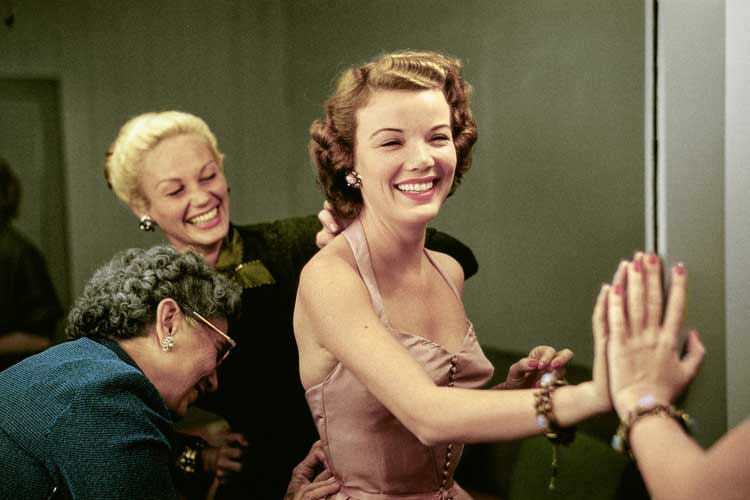
Ruth Orkin. Nanette Fabray, Set of The Band Wagon, Hollywood, 1952. © Orkin / Engel Film and Photo Archive; VG Bild-Kunst, Bonn.
Orkin (1921-85) is an American photographer whose name is barely known in Europe, despite her having worked as a photojournalist for prestigious magazines such as Life and Look, won awards and caught candid images of celebrities including Lauren Bacall and Leonard Bernstein on camera.
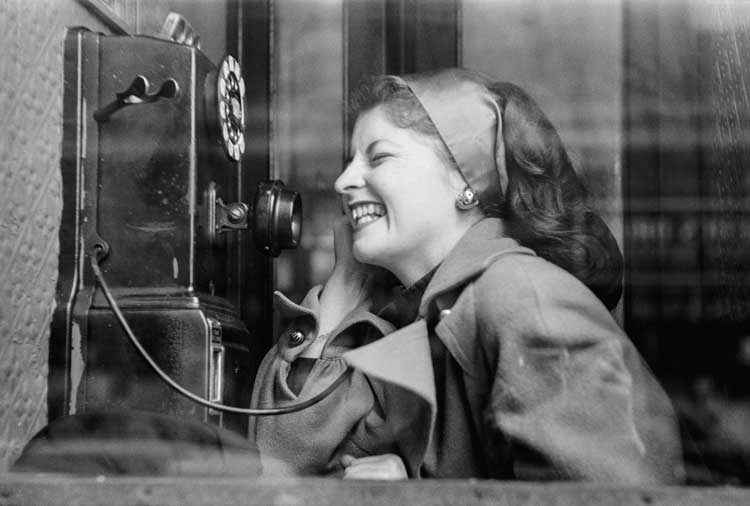
Ruth Orkin. Woman in Phone Booth, New York,1949. © Orkin/Engel Film and Photo Archive; VG Bild-Kunst, Bonn.
It is no surprise that it was F3 that rediscovered Orkin and first drew attention to her in 2021 with the exhibition A Photo Spirit. This small photo gallery in Berlin is dedicated to artists who engage in social causes and gives space to renowned photographers as well as lesser-known ones who are often ignored by bigger venues. A Photo Spirit unpacked Orkin’s core work with the hustle and bustle of New York streets in the late 1940s. These street photographs were very much in line with those by Helen Levitt and many others following the grand masters such as Henri Cartier Bresson.
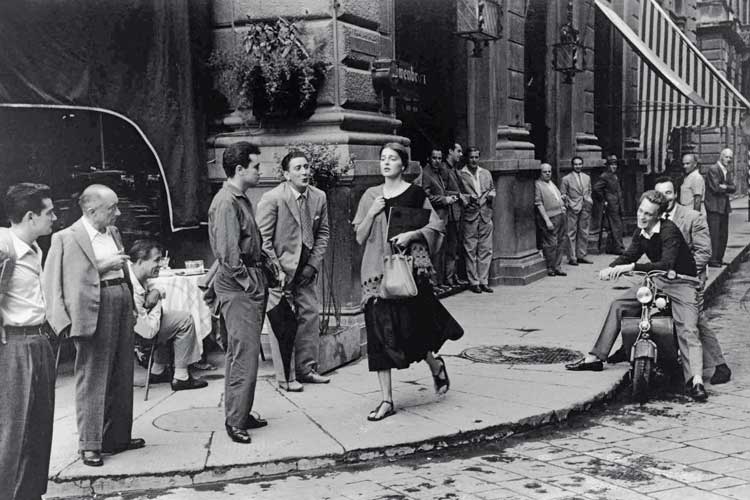
Ruth Orkin. American Girl in Italy, Florence, 1951. © Orkin / Engel Film and Photo Archive; VG Bild-Kunst, Bonn.
The show also included her impressions from a trip to Italy in 1951, which illustrated what it was like to travel alone as a woman. It led to a signature picture called American Girl in Italy, which shows a group of men in Florence ogling a young woman. This picture is included again here with another one from the series, called Jinx with Orange Shawl. It feels very contemporary as Jinx Allen, whom Orkin befriended in Italy, has her brown hair simply tied back rather than disciplining it with curlers or spending hours at the hairdresser’s to conform to beauty conventions of the period.
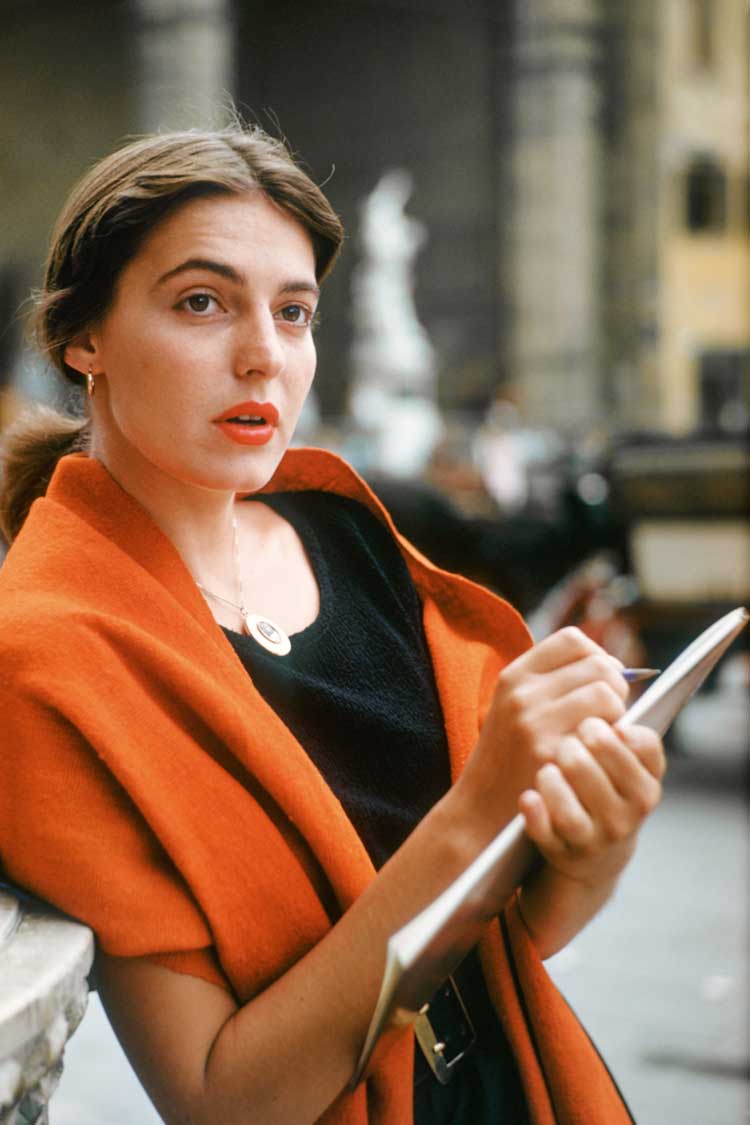
Ruth Orkin. Jinx with Orange Scarf, Florence, Italy, 1951. © Orkin / Engel Film and Photo Archive; VG Bild-Kunst, Bonn.
This theme of independence and emancipation runs through most of Orkin’s images. A good example is the portrait of an air hostess from the then newly formed Israeli airline El Al: the woman conveys optimism in her smile and looks into the distance. Of course, there is a notion of an advertisement in it, but nonetheless it exudes a joie de vivre.
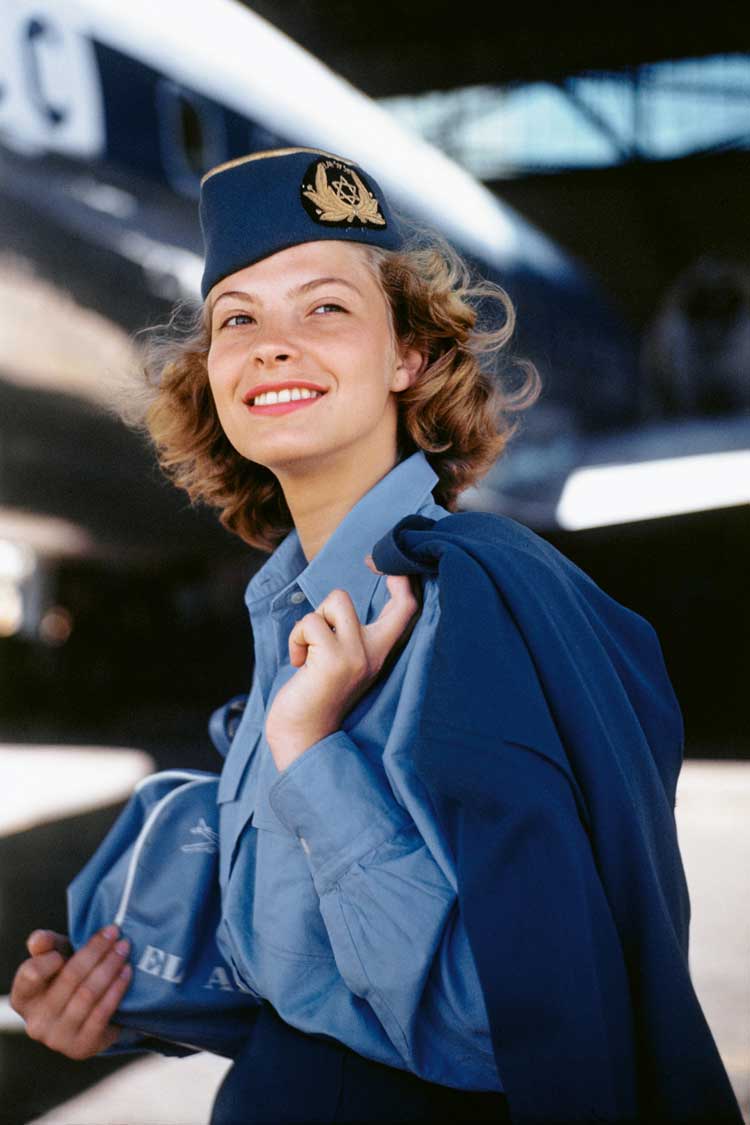
Ruth Orkin. El Al Airline Stewardess, Tel Aviv, Israel, 1951. © Orkin/Engel Film and Photo Archive; VG Bild-Kunst, Bonn.
There are also two black-and-white images of the American actor Jane Russell in a recording studio, in which she is wearing a blouse and a long skirt. Her stern look and contrapposto stance capture a moment of concentration but also an attitude that clearly says: “Don’t mess with me.”
One section of the exhibition features Orkin’s poignant 1949 reportage Who Works Harder?, in which she compares the life of a housewife and mother with that of a career woman. This features on the one side Joan Guckfin as the career woman who rushes through the city in a smart dress. In another shot, she takes notes in an office with one hand while holding the telephone in the other. She goes over a text and discusses it at the breakfast table with a man. Her professional engagement does not spare her the housework, so there are pictures of her of putting on rubber gloves to tackle the washing up and polish the silver.
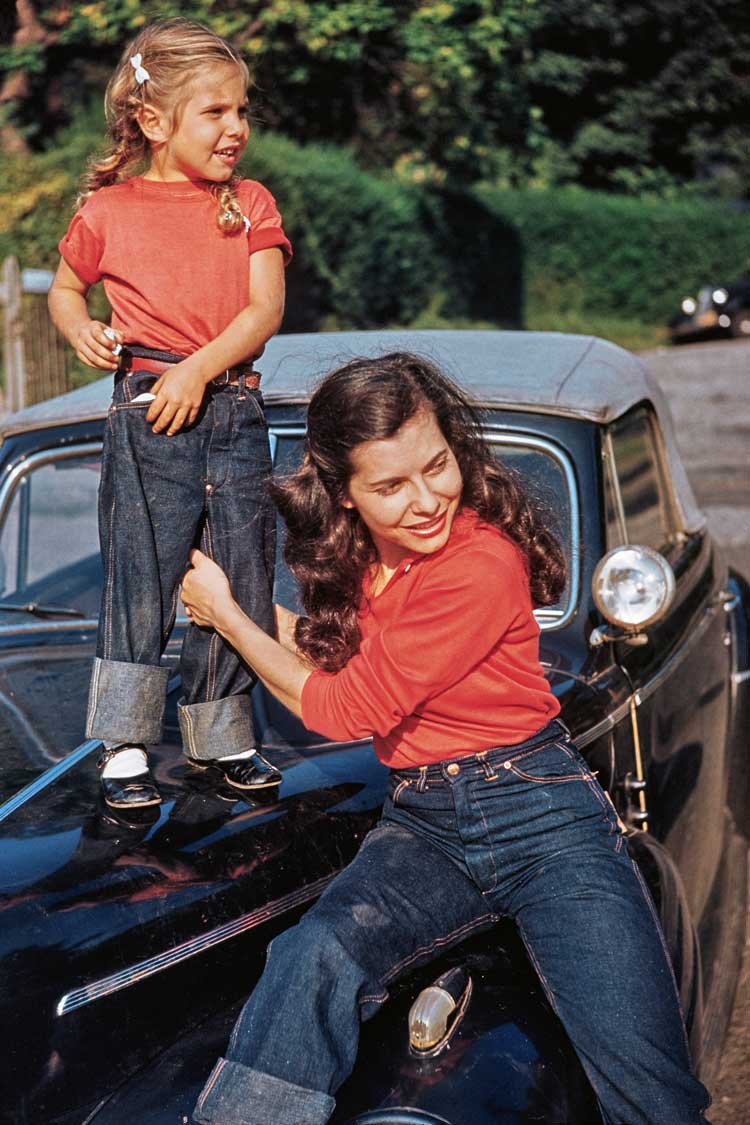
Ruth Orkin. Mother and Daughter, city unknown, 1950s. © Orkin / Engel Film and Photo Archive; VG Bild-Kunst, Bonn.
There is no child at her side unlike with Nancy Barnhardt, who represents how the housewife and mother lives. One scene captures her feeding the children, another holding her baby in one arm while on the telephone. A shot that nowadays seems shocking shows her baby next to her in the passenger seat of the car. In the evening, she entertains guests with her husband. She, too, spends time in the kitchen, here unloading a massive dishwasher. One picture sees her sleeping on the sofa.
Orkin herself had two children, but her prolific career as a photographer leaves no doubt which world she inhabited. Orkin was born in 1921 and grew up in Hollywood. Her mother, Mary Ruby, was a silent film actor and her father, Samuel Orkin, a toy manufacturer. She dreamed of being a camerawoman in the film industry, but it was not that easy. At the age of 10, she received her first camera and at 17 she was set on seeing the 1939 World’s Fair in New York. With hardly any money in her pocket, she took her bike and camera and cycled from Los Angeles across the country to New York City, taking photographs on the journey. After finishing her studies in photojournalism in Los Angeles, she returned to New York in 1943 and earned her living by taking baby photos and working as a photographer in nightclubs. She eventually got work as a freelance photo reporter for Life, Look and Ladies’ Home Journal.
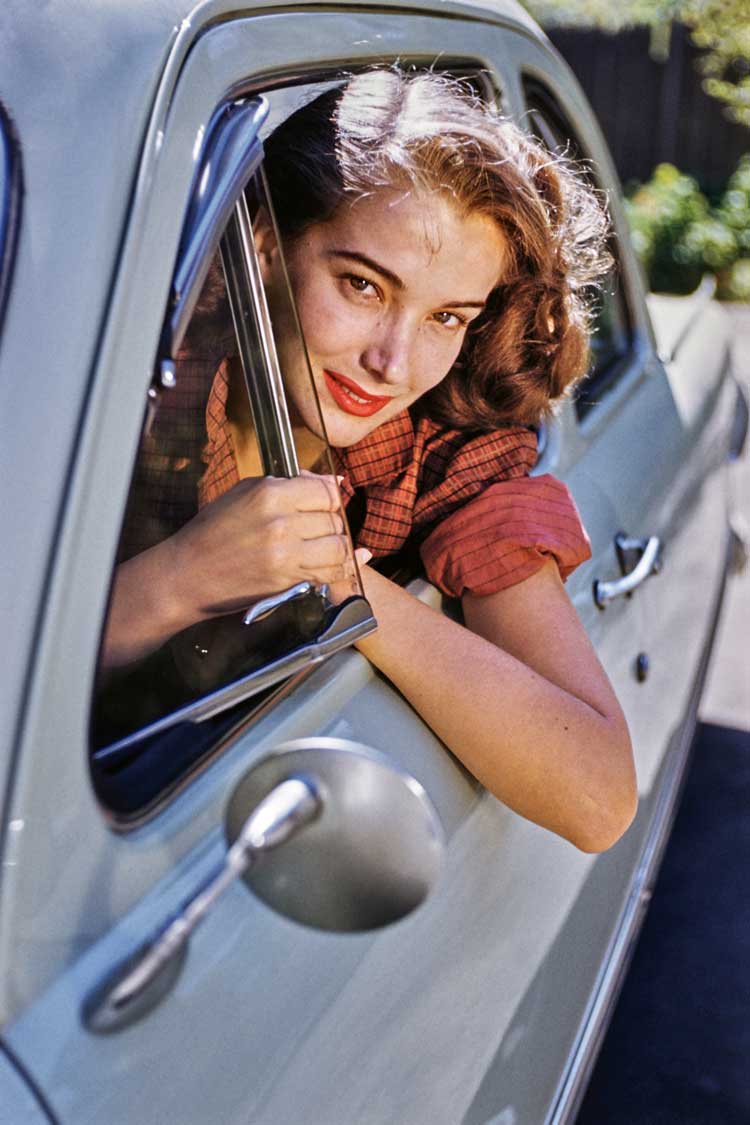
Ruth Orkin. Julie Adams, Los Angeles, 1952. © Orkin / Engel Film and Photo Archive; VG Bild-Kunst, Bonn.
Orkin went her own way and by capturing other women who also followed their own path, she made them visible and, with it, the advancing emancipation of women. Yet, she not only directed her camera at women in employment, but also at women present in everyday life. In the small selection of her black-and-white images here, taken in New York in the late 1940s, life just leaps out of them. One shows four women on a summer’s day relaxing at the edge of a fountain with their shoes off. Particularly striking is a young woman pictured laughing heartily in a telephone booth. Equally fascinating are the woman reading a newspaper and the one reading a book in a laundrette. This sharp observation tells of women with minds of their own who want to form their own views of the world.
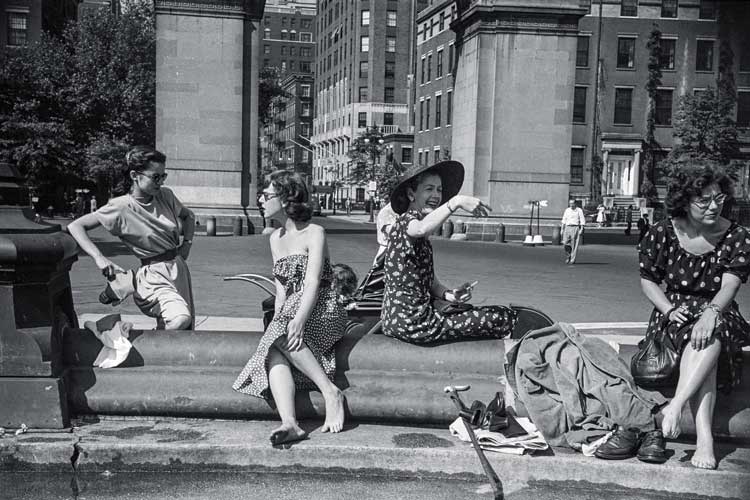
Ruth Orkin. On the Street, New York, 1948. © Orkin / Engel Film and Photo Archive; VG Bild-Kunst, Bonn.
Although, individually, each image would have been pleasant to look at, by bringing them together as a joint force, the curators, Nadine Barth and Katharina Mouratidi, have created a strong exhibition that is far more compelling than the previous one on Orkin’s work. This show is a gem and encountering this world of women who cherishes comradeship leaves the viewer with a reassuring feeling of warmth and comfort.
Further proof that Orkin is finally gaining recognition on this side of the Atlantic is reflected in the publication this month of a new book, Ruth Orkin by Anne Morin.
• Ruth Orkin (Photofile) by Anne Morin is published by Thames and Hudson, price £12.99.